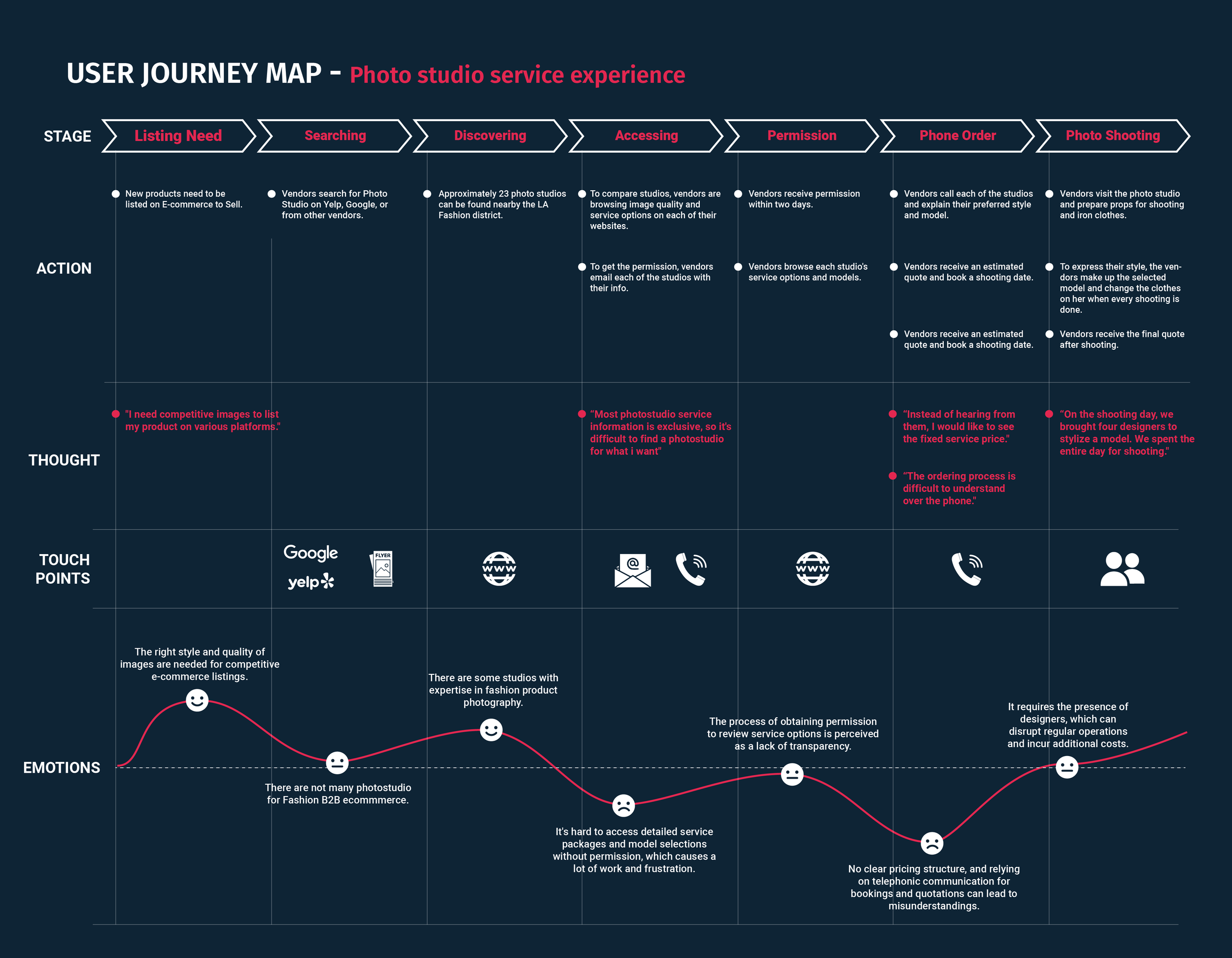03
PROBLEM
SOLVING
STRUCTURE
USER
CENTERED
DESIGN
"If you can't find the right answer, then your questions are wrong."
During my design process, I employ three key frameworks: User Journey Maps, Personas and Scenarios, and User Storyboards to create what I consider value-driven product(user oriented solution). Starting with User Journey Maps, I explore users' emotional and cognitive experiences, pinpointing crucial touchpoints in their problem-solving journey. This informs the creation of detailed personas and scenarios, aiding in the definition of our target users' needs in precise terms. Finally, User Storyboards transform these insights into visual narratives, illustrating potential user interactions and experiences with my designs in real-life scenarios, while also simulating business plans
Users' journey maps are essential tools for understanding user’s problems or needs in their contexts. Basically, it involves visualizing how a user currently deals in their circumstances related to emotional changes and thoughts.
By using this map, I am able to identify touching points that could be embedded into my design. For example, when designing a car purchasing app(CVIEW), I created a User Journey Map to understand the decision-making process of potential customers. Based on the insights, we found that interactions with dealers were often intimidating, turning excitement into stress. To mitigate this, I found that many decision helpers are involved in this purchasing experience.
This understanding in user’s journey is crucial in the design process because it defines the scope of activities where to focus, ensuring that the solutions I design are deeply aligned with the user's needs and pain points.
Finalizing the Scope of Activities Based on Findings from User Journey Map
02. PERSONA AND SCENARIO
Drawing on insights from the user's journey and their problem-solving experiences, I create personas and scenarios tailored to specific demographics and behavioral traits. For each persona, ideally two or three, I develop scenarios that depict their typical approach to challenges within their unique circumstances.
For instance, in the CVIEW Project, a mobile app for purchasing cars, I developed a persona of a single mother with limited car knowledge, needing a vehicle to support her daily caregiving activities. I detailed her reasons for needing a car and how she would approach the purchasing process, including the involvement of decision helpers.
By creating these personas and scenarios, I can identify unmet needs in the users' context, allowing me to design solutions that are both meaningful and relevant to their physical and cognitive requirements.
Simulating Product Concepts and Marketing Plans in User Stories
03. USER STORYBOARD
After developing personas and scenarios from the User Journey Map, the final design step is creating user-centric products. User Storyboards are essential in this phase, as they visually represent how personas interact with and experience products in real-world scenarios. This method facilitates the simulation of product concepts and business strategies.
For instance, in the CVIEW (a car purchasing app) project, I incorporated an augmented reality tool to enhance information access and support users' decision-making in car purchases. The storyboard depicted how users discover and integrate the app into their lives, which was instrumental in refining our marketing strategy. It also highlighted the product's usage in the buying process and evaluated its value to the target audience.
Ultimately, User Storyboards are crucial for gauging product usability and value from the users' perspective. They offer a dynamic framework for validating a product's market viability and its desirability among users.
